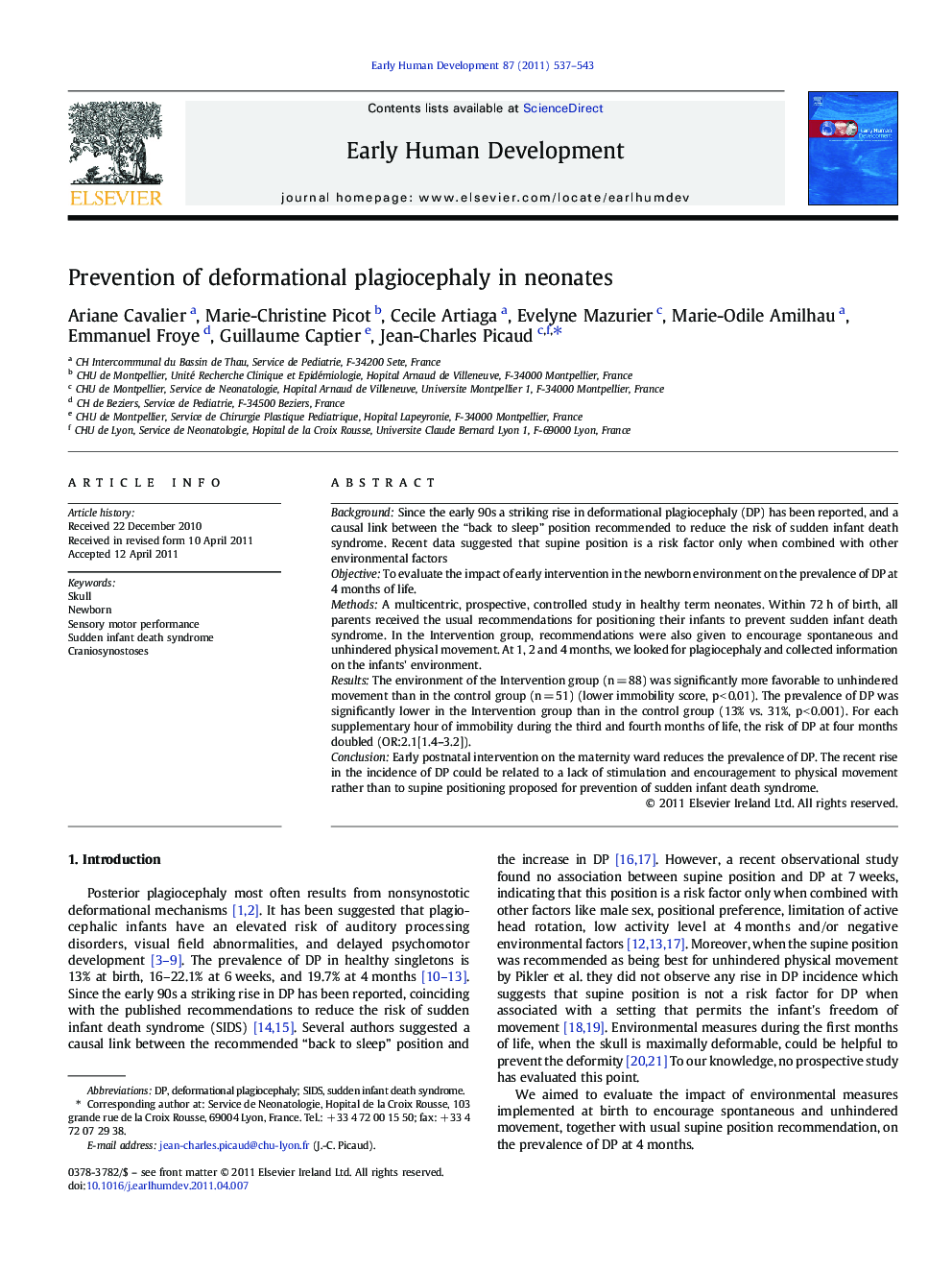| Article ID | Journal | Published Year | Pages | File Type |
|---|---|---|---|---|
| 3917077 | Early Human Development | 2011 | 7 Pages |
BackgroundSince the early 90s a striking rise in deformational plagiocephaly (DP) has been reported, and a causal link between the “back to sleep” position recommended to reduce the risk of sudden infant death syndrome. Recent data suggested that supine position is a risk factor only when combined with other environmental factorsObjectiveTo evaluate the impact of early intervention in the newborn environment on the prevalence of DP at 4 months of life.MethodsA multicentric, prospective, controlled study in healthy term neonates. Within 72 h of birth, all parents received the usual recommendations for positioning their infants to prevent sudden infant death syndrome. In the Intervention group, recommendations were also given to encourage spontaneous and unhindered physical movement. At 1, 2 and 4 months, we looked for plagiocephaly and collected information on the infants' environment.ResultsThe environment of the Intervention group (n = 88) was significantly more favorable to unhindered movement than in the control group (n = 51) (lower immobility score, p < 0.01). The prevalence of DP was significantly lower in the Intervention group than in the control group (13% vs. 31%, p < 0.001). For each supplementary hour of immobility during the third and fourth months of life, the risk of DP at four months doubled (OR:2.1[1.4–3.2]).ConclusionEarly postnatal intervention on the maternity ward reduces the prevalence of DP. The recent rise in the incidence of DP could be related to a lack of stimulation and encouragement to physical movement rather than to supine positioning proposed for prevention of sudden infant death syndrome.
